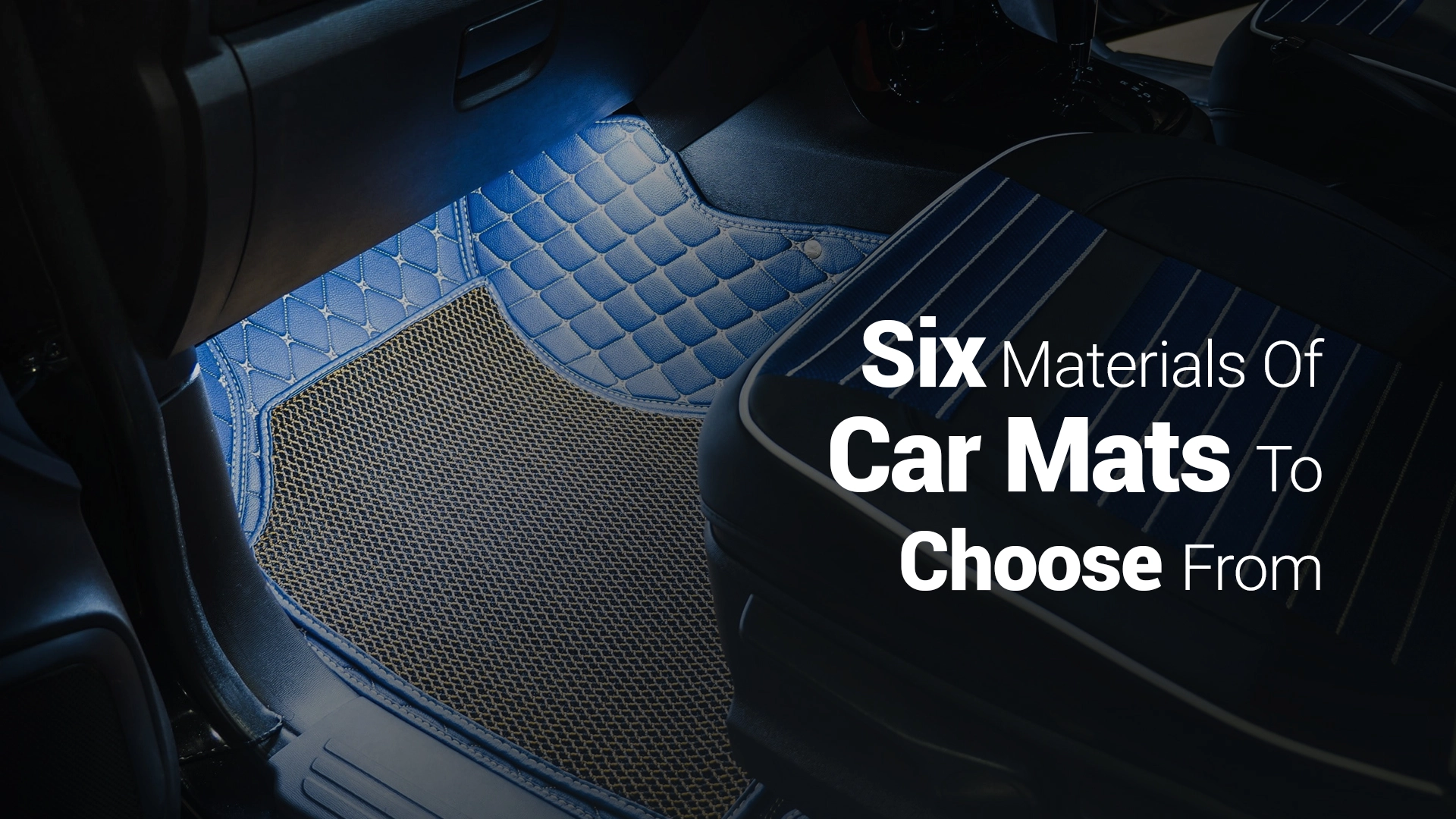Six Materials Of Car Mats To Choose From
Introduction

Car owners, especially new ones, will likely wonder which is the best car mat for their vehicle. As each person’s needs differ, it is probably easiest for us to inform you of the various types of mats, such as logo mats available online and leave the decision up to you.
Basic Features Of Car Mats
Safety comes first, even before preference and needs. Car mats that fit snugly on the floor without obstructing important driver controls like the brake pedals are considered safe. Additionally, they should not be slippery because that could cause the driver to accidentally hit the acceleration or brakes.
The mat should be fitted with a tool to secure the mat down to the floor at the passenger seat. Do note that velcro will not suffice. If there is no way to fasten the mat, avoid getting it. Not fastening the mat to the floor could cause dirt and water to seep through and cause damage to the vehicle floor. This completely defeats the purpose of the car mat.
Lastly, the car mats should be made of eco-friendly materials not only for the environment but also because we don’t want harmful fumes from the rug to be circulated in our vehicles.
Original or Non-Original rugs
Original rugs are those that come from the same manufacturer of the car model. As such, they fit better and are likely to be of a higher quality than non-original ones. Non-original rugs look great and have high sides. Although the durability of both types of rugs depends on the weather, the former tends to last longer than the latter.
When car mat shopping, look out for the material and the fastening mechanisms of the mats before making your choice.
Now let's look at the different materials that car mats come in.
1. 3D Car Mats
High-quality 3D car mats have a host of advantages in terms of function over other materials including protection from pollutants, durability, comfortability of occupants, climate versatility, and safety. These volumized rugs are also aesthetically pleasing which not only speaks to the style of the driver but also brings joy with every ride in the vessel.
These days, some 3D car mats are being manufactured with a material that keeps dust at the bottom of the car and away from the air that the driver and passengers will breathe.
The best part about these car mats? Buyers won’t have to break the bank to get their hands on one of these. They are not the cheapest but given the features of this advanced car mat, it is surely an investment worth making.
2. Rubber Car Mats
Rubber mats are a popular alternative to 3D mats because not only are they easy to wash, but they are also affordable and offer complete protection from contaminants. They have an average lifespan of 2 to 3 years which is not bad. Rubber mats are often cut in a generic shape which means they are a universal fit. Some disadvantages of rubber are that it may lose flexibility in the cold and produce an odour in the heat. The best way to minimize these problems is to invest in higher-quality rubber car mats.
3. Polyurethane Car Mats
Polyurethane car mats look like rubber ones but have a couple of added benefits. They are lighter, more resistant to wear and tear as well as deformation, are more durable, and odourless. That said, they are almost three times pricier than rubber car mats and they rarely retain dust.
Installing polyurethane car mats might also require the mat to be hand-cut which can create an unprofessional finish around the edges. So, if appearance is important to you, then you might want to go for rubber mats. Polyurethane rugs are also smooth which can cause the driver’s feet to slip. They also lose their elasticity easier than rubber mats.
4. Textile Car Mats
Textile rugs, also known as Fabric or Pile car mats, look nicer than rubber or polyurethane, retain more dust, prevent slips, and do not lose their shape if dried appropriately in the winter.
The downsides are that they lose their colours quickly, can cause moisture and puddles to accumulate at the driver’s feet, and cause fogging on the glass when the heater is on. Although these are only likely if the rug is of low quality, it should still be factored in in your shopping decision.
It is pivotal that textile rugs have a rubberized base for friction and contamination prevention. Although textile car mats can be troublesome in cold climates, they are just nice for warmer temperatures.
5. EVA Car Mats
Ethylene Vinyl Acetate (EVA) car mats are new in the market but are indeed an impressive material. Thanks to its design, users can slightly tilt the mat and safely remove it for cleaning without spilling the contaminants. To clean and dry it, simply flip it 180 degrees and let it air for a while. EVA car mats are also eco-friendly, chemical-resistant, wear and tear-resistant, light, and will do well in extreme climates.
6. Velor Car Mats
Velor car mats are another less well-known but interesting option. They absorb water and retain dirt and dust to keep your vehicle clean. They are light, easy to clean, comfortable, elegant and, we think, a better option than textile rugs. We have given a comprehensive overview of six different materials of car mats including the pros and cons of each. While the features of the mats are important, remember that your preference, comfort, and the climate of the area where you live should also be factored in when making your choice. The car mat should also fit your vehicle, be durable, and fit the aesthetic of your car.
Conclusion
If you’re still hesitant about the whole idea of a car mat, experienced drivers often testify to the need for a car mat in their cars. Car mats are a lifesaver and are definitely worth your investment given the numerous advantages and protection they provide for your vehicle. For one, they keep the floor of your car clean and prevent it from corroding. Additionally, instead of having to clean the floors, owners only have to clean the mat. Lastly, and perhaps most importantly, ensure that the car mat of your choice meets all the safety features required.
---
Published: 07-Apr-2021
Author: Colin Watson

You can see a list of our current authors and short bio here
